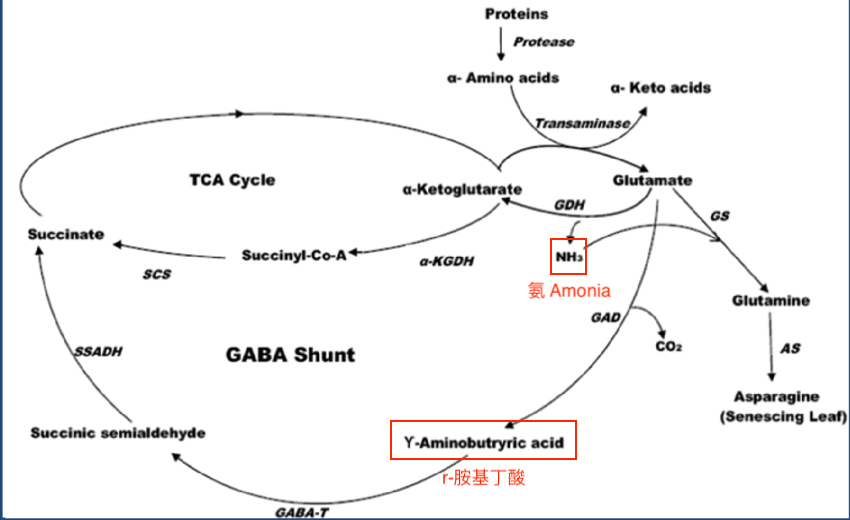Gaba Tea, also called Smooth Tea, is a functional tea.
GABA indicates that tea leaves contain a high percentage of Gaba Aminobutyric Acid.
Being a low level in our blood, GABA is an important inhibitory substance of neural transmission, acting as a depressant.
Furthermore, it has been credited with contributing to reducing depression, easing the digestive system, and lowering blood pressure.
The appearance of Gaba Tea came from an accident. In 1984, Dr. Tsushida Tojiro in the National Research Institute of Tea of Japan
was conducting research about prolonging the shelf life of fresh tea leaf ingredients.
One of the methods was to utilize nitrogen to block out oxygen,
and he accidentally discovered that when fresh tea leaves were left in the high-nitrogen environment,
its level of Gaba Aminobutyric Acid would be accumulated.
Due to its fermentation time being extremely long, plus the need of inserting sufficient nitrogen to ensure oxygen-free fermentation,
its processing is fairly unforgettable.
Being able to see the sunrise twice during this process is the amount of time you can expect in this production.
It is also unavoidable even if you lean against the wall could put you into sleep.
You will have Duke of Zhou (meaning being in the condition of sleeping) by your side during this whole process.
How does the Gaba Aminobutyric Acid appear in Gaba Tea?
We have to start with biochemistry. Nitrogen is the most important part of Leaf Senescence,
enabling the large molecules within the leaf to break down into nutrients for seeds and fruits.
Firstly, the protein is decomposed into Glutamate, where ammonia emerges during the process. After going through a series of reactions,
it is finally composited into Succinate, and entering the TCA Cycle to produce energy.
Succinate then has two options for its journey: TCA Cycle and GABA Shunt.
GABA Shunt is considered as a way to make up for the lack of Succinate during the TCA Cycle.
What’s interesting is that when there is no oxygen in the environment, GABA-T will be unwilling to work,
then accumulating a large amount of Gaba Aminobutyric Acid, which is the principal process of Gaba Tea.

The freshly-made Gaba tea is not that appealing to our nose. Do you remember that ammonia will appear during the process?
Although the smell of ammonia is quite unpleasant, it will disappear after storage for a period of time.
Nevertheless, it does not change the fact that no matter how you brew this tea, it would stay bitterness-free and astringency-free.
That is why it is called Smooth Tea.
As a result, the sale of newly-made Gaba tea is often not satisfying.
However, after storing it for a longer period of time, it would be appreciated by more and more tea lovers.
For Gaba tea to have the health benefits, it has to contain 150 mg or above of Gaba Aminobutyric Acid per 100 grams of dry tea leaves.
Due to its effect on lowering blood pressure,
it is necessary for those who already have low-level blood pressure to pay extra attention when having this tea.
Meanwhile, try not to consume it in the early morning or when driving; otherwise, it might put you into sleep easily.
#gabatea #smoothtea #TCACycle #relaxation #lowerbloodpressure #functionaltea #astrigencyfree #anaerobic #fermentation
![[Tea Science] Gaba Tea. A Lucky Hit of Smooth Tea.](../img/upload/05fc79f3f002b137084d4adc6fa9ee32.jpeg)